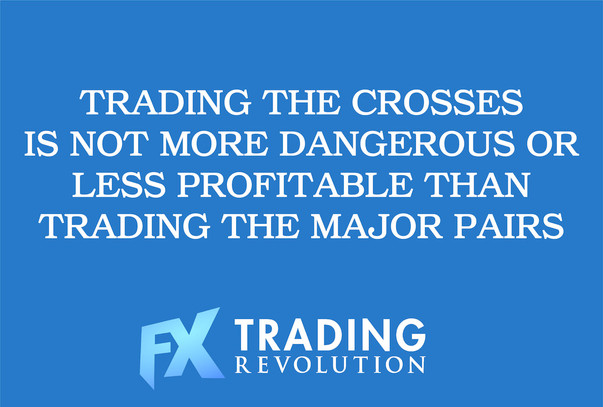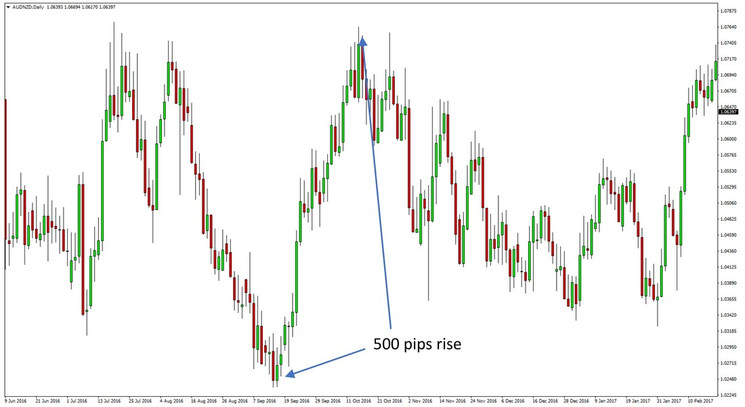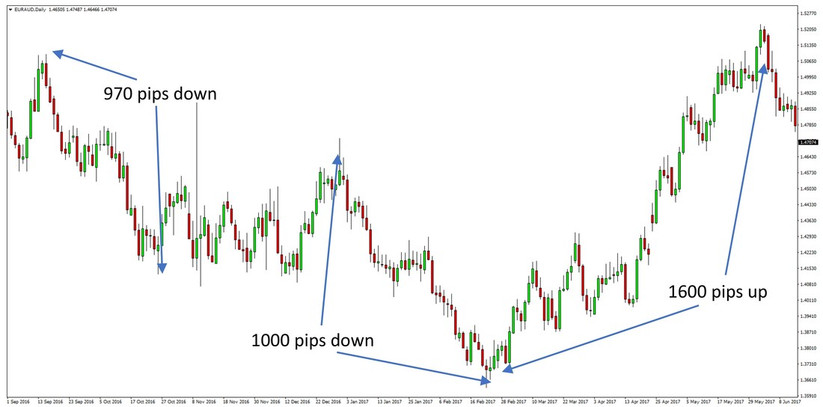Is trading crosses riskier than trading the majors?
One of the most common advice in the Forex world is to stick to trading the major currency pairs. Very often, some of these, so-called experts even recommend trading only one major currency pair, most often EURUSD getting the number one pick.
Rationales cited behind this thinking include arguments like, major pairs are more liquid, easier to trade, less volatile, less unexpected spiking price action, generally better execution (for short-term trading) and so on.
It’s believed that focusing on only one major currency pair helps the trader to master its unique characteristics and therefore trade it more successfully once the trader has gained more knowledge about that particular FX pair.
As a result, trading cross currency pairs is a bit of a taboo among Forex traders, especially traders who are just starting out, many of whom are led to believe that somehow trading the crosses is inherently more dangerous and more difficult than trading the majors.

However, the reality is not so simple. Currency pairs change their behavior as times are changing, and if for example, EURUSD was trading in a range for two years, it doesn’t mean that a strong trend will not emerge in the following two years.
Although there is some merit behind the reasoning to trade only one pair, in the long run, it’s likely to bring smaller profits as the ever-evolving Forex market rearranges the opportunities among the different currency pairs.
Sticking to only one pair, or even to only the 8 major Forex pairs over the long run means that the trader will miss all other opportunities that exist every day on the other currency pairs.
Of course, taking on all currency pairs right from the start and trying to follow all of them can be hugely overwhelming for a new comer.
So, in this regard, following the general advice and sticking to major pairs, in the beginning, is a prudent move. However, it should not be a long-term strategy because trading the crosses is not intrinsically more dangerous or less profitable than the major pairs.
In fact, quite often, much better opportunities exist on the cross currency pairs than on the majors.
Different types of cross pairs
Trading the crosses can be more and less risky compared to trading the majors. This depends on the specific cross you choose and also it can depend on the time period in which you decided to trade that particular cross currency pair.
As we all know, some periods in the markets are generally much more volatile and some periods are distinguished by very low volatility across all currency pairs.
Nevertheless, some Forex pairs are naturally more volatile than others. In this regard, cross currency pairs can be generally divided into two categories according to their volatility.
1) Correlated cross pairs – less volatile
Correlated cross pairs are forex pairs comprised of two currencies which generally trade hand in hand and their correlation is very high. How correlated two currencies are can be checked by looking at each currency’s separate chart against the US Dollar.
So, for example, the Australian and the New Zealand Dollars are two highly correlated currencies and this can be confirmed by looking at the AUDUSD and NZDUSD charts. Most of the time AUDUSD and NZDUSD move in the same direction.
The cross currency pair is AUDNZD therefore, which is generally a very calm and slow moving pair as a result.
The same is true for the EURGBP currency pair because the Euro and the British Pound generally move in the same direction.
Commodity crosses like the AUDCAD and NZDCAD pairs are also most of the time trading in ranges because AUD, NZD, and CAD are all currencies highly dependent on commodity prices. Long-term trends rarely develop on these cross pairs.
Correlated cross pairs that are generally characterized by low volatility and tight daily trading ranges include:
- EURGBP
- EURCHF
- GBPCHF
- AUDNZD
- AUDCAD
- NZDCAD

AUDNZD Daily chart – A lot of sideways price action!
2) Uncorrelated cross pairs – more volatile
Now, this is where a trader can get an adrenaline boost. These currency pairs are comprised of uncorrelated currencies, for example, European against Commodity currencies, or European against the safe-haven Japanese Yen.
As a result, they are highly volatile and most often very trending. GBP crosses lead the way in this regard, with GBPNZD and GBPJPY topping the list, sometimes even reaching over 200 - 300 pips of daily trading ranges.
Therefore, we can conclude that uncorrelated cross pairs are riskier to trade than the correlated crosses, especially for new comers. However, they are also more attractive as they are often trending and the moves are large which means being on the right side can bring large profits.
Here are some of the uncorrelated cross pairs that are normally very volatile and very trending:
- EURJPY
- GBPJPY
- EURNZD
- EURAUD
- EURCAD
- GBPNZD
- GBPAUD
- GBPCAD
- AUDJPY
- NZDJPY
- CADJPY

EURAUD Daily chart - Regular swings of 1000 pips or more
Crosses vs. Majors – What’s different?
1) Higher spreads on crosses
Cross currency pairs have generally higher spreads than the major pairs and depending on your broker the size of the spreads can vary greatly.
Higher spreads are normal due to the fact that crosses are traded much less and in much lower volumes on the interbank market than the major pairs.
In fact, institutional traders will most often trade cross pairs through USD pairs thus creating, even more, liquidity for the US Dollar. More on this subject and how to use USD pairs to analyze the crosses will be discussed in a future piece of this article series.
2) Crosses have their unique personalities just like the major pairs
Just opening a few charts from several different cross pairs can demonstrate how each of them will tend to have their own unique characteristics, just like the majors.
Some are trending for most of the time with minuscule retracements during the move, while other pairs spend long periods of time in ranges. Even among the crosses that are of the same type, each of them will have a slightly different usual behavior. Learning to tune into the day to day trading pulse of each currency pair comes with time and practice.
3) Support and resistance levels tend to work better on major pairs
Because the major pairs are most actively traded and most traders are placing their orders on the major pairs, support and resistance levels are generally more reliable.
While on cross currency pairs the price will often break a seemingly important resistance level only to return back below it and then go above the resistance again. On the major pairs this is a rare occurrence.
To tackle these unwanted situations we need to use a relatively different approach when we are trading the crosses compared to when we are trading the majors. More on this topic will follow in the next articles of this series.





